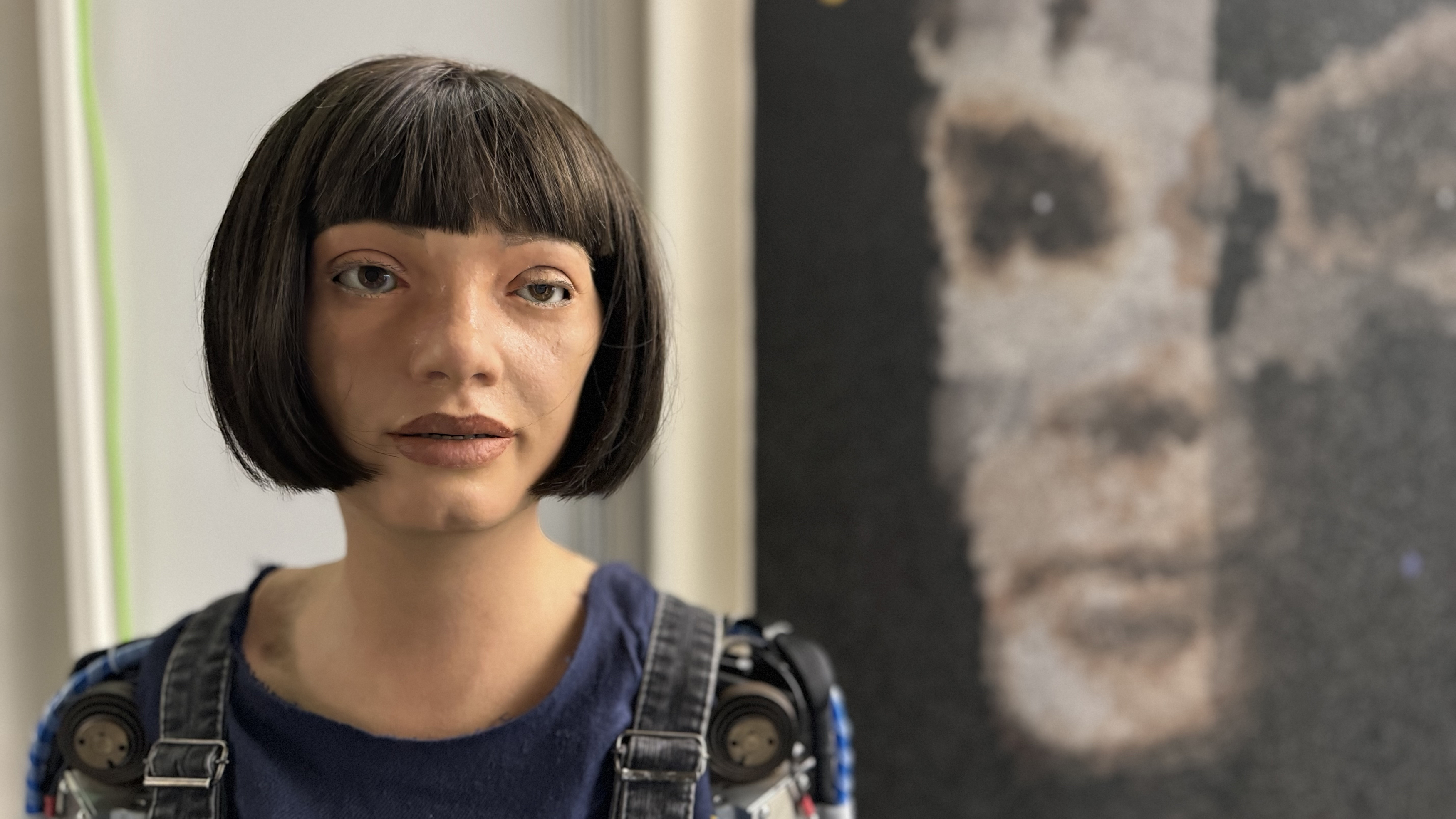Science fiction promised us robot butlers, but it seems they rather fancy themselves as artists instead. And who can blame them? On November 7, a painting of the mathematician Alan Turing by an AI-powered robot called Ai-Da sold at auction for a cool $1,084,000 (around £865,000). That’s a more appealing lifestyle than having to sprint around a Boston Dynamics assault course.
The Sotheby’s auction house said Ai-Da is “the first humanoid robot artist to have an artwork sold at auction.” It probably also set the record the most online grumbling about a painting, which is understandable – after all, shouldn’t robots be sweeping up and making the tea, while we artfully dab at the canvases?

Naturally, the Ai-Da robot and its maker Aidan Meller don’t agree that art should be ring-fenced by humans. As Marvin from The Hitchhiker’s Guide to the Galaxy once noted: “Here I am, brain the size of a planet and they ask me to take you down to the bridge. Call that job satisfaction? ’Cos I don’t.”
But rather than rely on Douglas Adams to fill in the blanks, we asked Ai-Da and Meller what they’d say to those who are skeptical about AI-generated art – and what the landmark ‘A.I. God’ painting means for the future of creativity…
The latest ‘non-artist’
Ai-Da herself usually prefers to let her art do the talking. When we asked her why she paints her answer was: “The key value of my work is in its capacity to serve as a catalyst for dialogue about emerging technologies”.
Fortunately, her creator Aidan Meller, a gallerist and veteran of the art world, was more forthcoming on why team Ai-Da doesn’t think the painting or her work should be considered a threat to human artists.

“Contemporary art has always provoked discussions about what art is and Ai-Da and her work is no different,” Meller told us….
Read full post on Tech Radar
Discover more from Technical Master - Gadgets Reviews, Guides and Gaming News
Subscribe to get the latest posts sent to your email.








